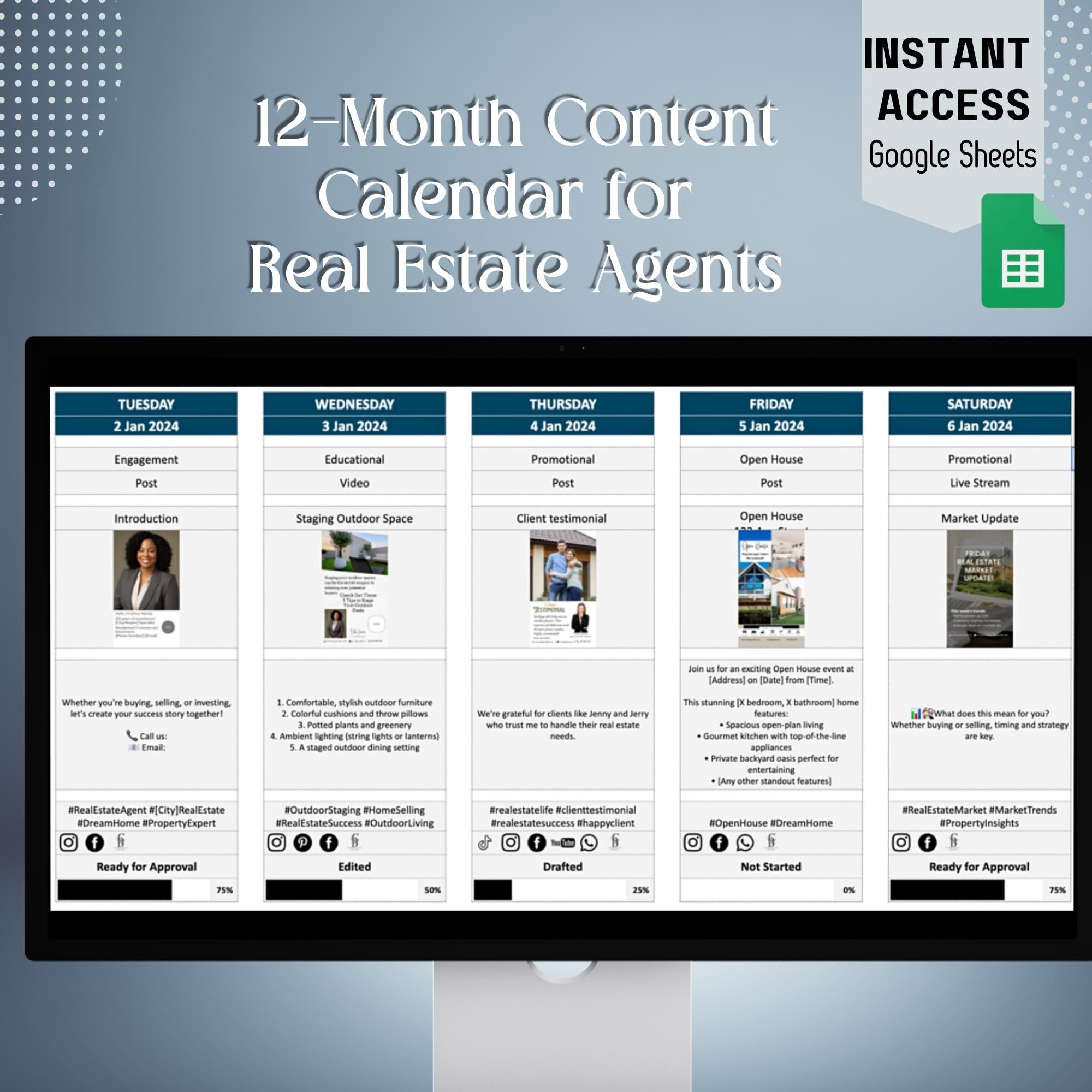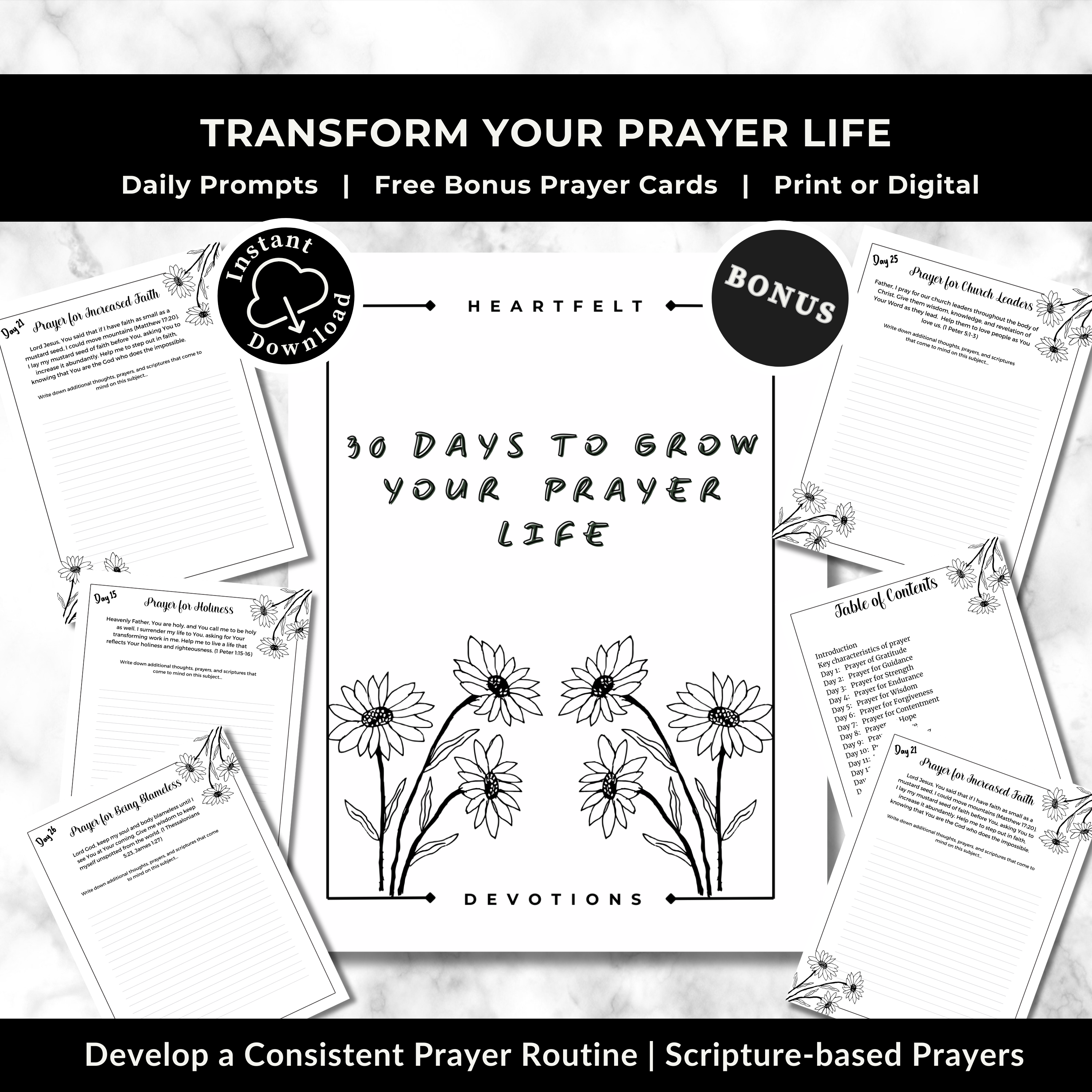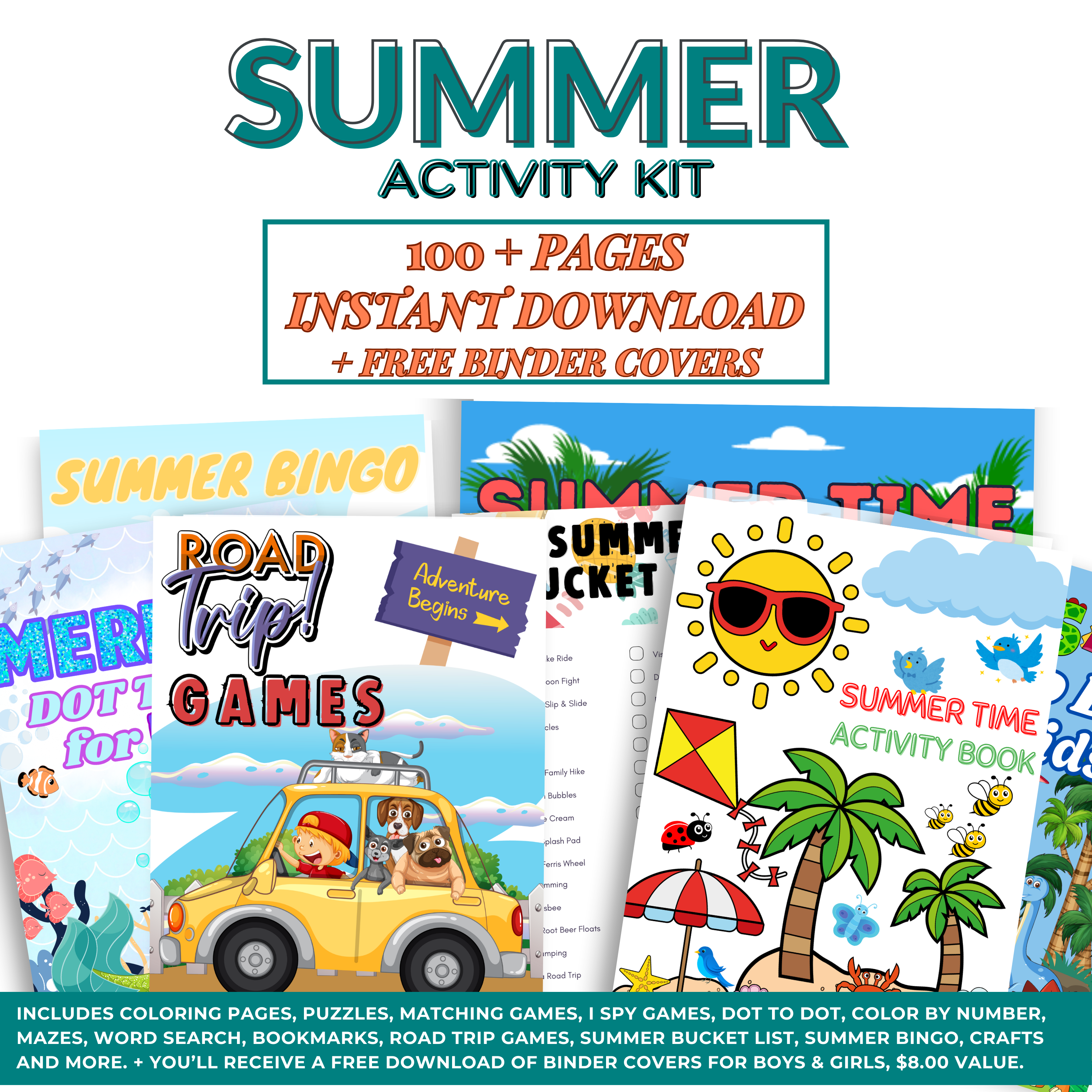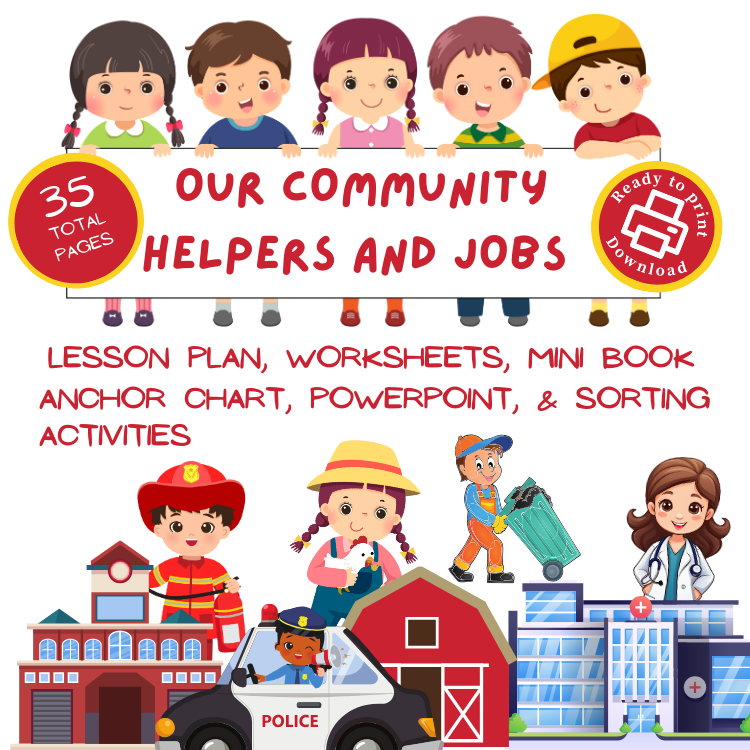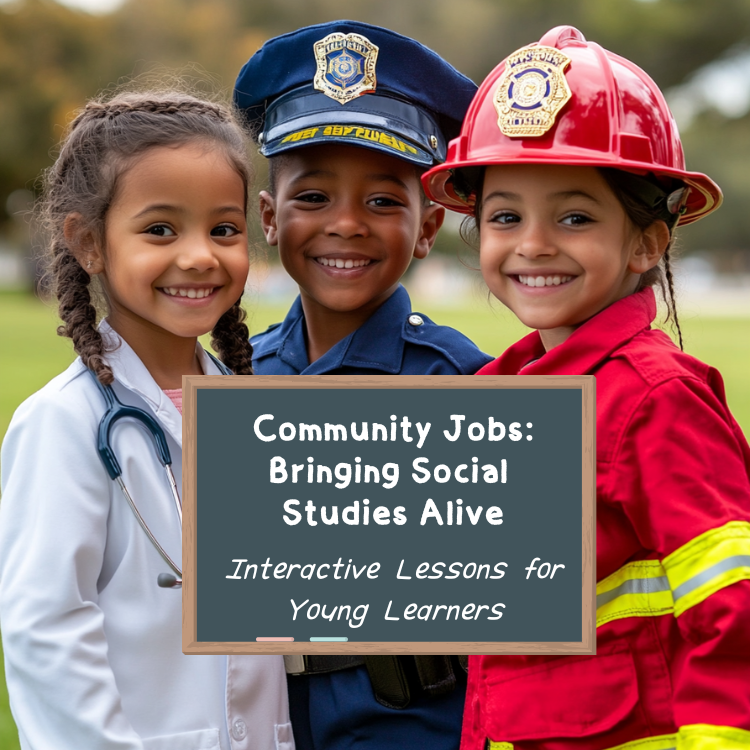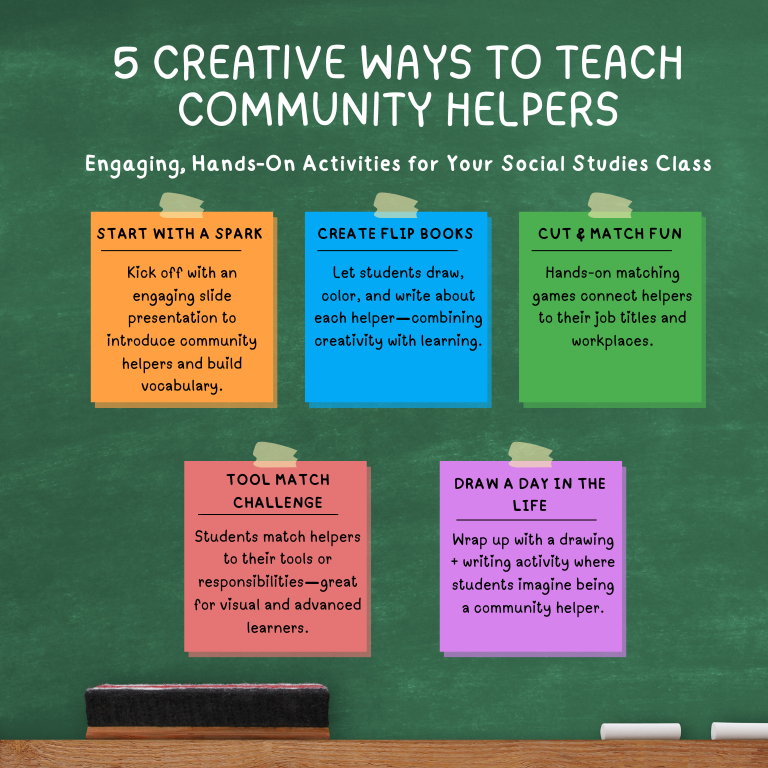Social Studies for Young Learners
Social studies for young learners should feel real, tangible, and fun. The concept of community jobs is the perfect entry point—it helps early elementary students understand the world around them by focusing on people they already recognize and admire. Firefighters, mail carriers, doctors, and teachers aren't abstract figures; they're real-life superheroes kids encounter in everyday life.
This guide shows how to bring that excitement into your classroom with engaging, hands-on activities tailored for young learners. Each one encourages exploration through play, creativity, and personal connection. Even better? It includes ready-to-use tools like:
- "Our Community Superheroes" Mini-Flip Book
- "Our Community Helpers" Anchor Chart
- "Community Helpers" Match Activity
- "Day in the Life of a Community Helper" worksheet
These resources are especially designed for early learners and emerging readers. Let’s take a look at how to use them.
1. Start with the Anchor: Our Community Helpers Chart
The Our Community Helpers Anchor Chart is a perfect way to introduce young students to the many people who make up a community.

How to Use It with Young Learners
-
Read it aloud using expressive voice and visuals.
-
Pause and ask, "Have you seen this helper before? What do they do?"
-
Let students point to a helper they want to learn more about.
Engagement Tip
Create a magnetic or Velcro board with helper images students can sort into categories like "keeps us safe," "keeps us healthy," or "helps us learn."
2. Explore Through Story: Our Community Superheroes Mini-Flip Book
The Mini-Flip Book lets students connect reading, writing, and drawing in a highly engaging way. It's designed to help young learners describe what each helper does while seeing them as community superheroes.
Steps to Use It
- Read the book together during circle time.
- Discuss the job shown on each page.
- Students complete the sentence: "A [helper] helps by..."
- They draw a picture to match.
Why It Works
- Builds early literacy skills.
- Reinforces vocabulary in a meaningful context.
- Gives every child a book they can feel proud of.
3. Hands-On Connection: Community Helpers Match Activity
Young learners love to cut, glue, and match—and this activity turns that into a learning moment.
How It Works
- Students cut out images of different community helpers.
- Match each helper with a tool or description.
- Discuss answers as a group.
Perfect For
- Fine motor skill development
- Visual learners
- Reinforcement of job names and purposes
Make It Interactive
Turn it into a game! Call out, "Who keeps our teeth clean?" and let students hold up the matching picture.
4. Core Activity: "Day in the Life of a Community Helper"
This printable worksheet allows kids to imagine themselves as a helper in their community.
Designed for Young Students
- Sentence prompts support early writers.
- Open-ended drawing section builds creative expression.
- Can be completed with guidance or independently.
How to Run It
- Choose a helper.
- Use class books or videos to learn about that role.
- Guide students to write what their helper does.
- Let them draw themselves as that helper.
Classroom Display Idea
Create a "Helpers in Action" wall showing each student's worksheet and drawing.
5. Writing Prompts for Every Level of Early Learning
Use writing to encourage expression at each stage of development.
Emerging Writers
- Copy simple sentences: "A firefighter helps people."
- Use fill-in-the-blank prompts: "A mail carrier brings ___."
Growing Writers
- Complete sentences with more detail: "A doctor helps people by ___."
- Add why they chose that helper: "I like __ because __."
- Pre-Writing Students
- Dictate their answers to an adult.
- Focus on drawing and oral storytelling.
- Always celebrate effort, not just spelling or grammar. Let students share their work in a class circle or with reading buddies.
6. Arts Integration to Visualize Learning
Young learners process through doing. Here’s how to connect art and social studies:
1. Portraits of Helpers
- Use markers, crayons, or paint to create portraits of community helpers.
- Add labels: "This is a ___."
2. Build a Helper Mural
- Draw buildings and scenes (fire station, school, hospital).
- Add student-drawn helpers into the community.
3. Super Badge Craft
- Kids create a superhero-style badge for their favorite helper.
- Use paper, foil, or stickers.

These art projects reinforce understanding while giving students ownership of their learning.
7. Differentiation Tips for Young Learners
Every young learner has unique needs. Here's how to adapt the unit:
Pre-K and Kindergarten
- Focus on drawing, oral expression, and identifying helpers by name.
- Use more pictures than words.
First and Second Grade
- Begin introducing writing tasks and reading short passages.
- Let them research helpers using guided reading tools.
English Language Learners (ELL)
- Use visuals, bilingual word cards, and buddy reading.
- Repeat key vocabulary often.
Students with Special Needs
- Offer alternative ways to show learning: pictures, movement, pointing.
- Use visual schedules and clear step-by-step instructions.
Advanced Young Learners
- Encourage them to write more detailed descriptions.
- Let them "interview" a classmate acting as a helper.
8. Extend Learning Beyond the Classroom
Career Dress-Up Day
Let students come to school dressed as their favorite community helper. Do a parade or presentation.

Thank-You Cards
Create artful thank-you cards for school staff, nurses, or local helpers. Deliver them as a class.
Family Involvement
Invite parents or family members to talk about their jobs. Kids love seeing the connection between home and school.
Class Book Compilation
Combine all student pages from the "Day in the Life" worksheet and mini-books into one big class book.
Make Learning Easy with All-in-One Printables

These activities were created with young learners in mind. The Community Helpers Worksheets Printable Pack by Content Depot Design includes
- Structured lesson plan for easy teaching
- Worksheets to reinforce vocabulary, matching, and comprehension
- Printable mini-book: “Our Community Superheroes”
- Colorful anchor charts (8.5x11 & 8.5x14 sizes)
- PowerPoint slides featuring community roles and workplaces
- Hands-on sorting & matching activities to build fine motor skills
- "A Day in the Life” writing prompts and drawing exercises
It saves you prep time while delivering lessons that connect, engage, and excite young minds.
👉 Grab the Community Helpers Worksheets Printable Pack here.
Final Thoughts: Community Helpers Make Learning Real
Social studies can be real, engaging, and joyful—especially for young learners. Teaching about community helpers introduces careers, builds gratitude, and strengthens literacy. With the right materials and a little imagination, your early learners will connect what they learn in class to the world outside.
And who knows? You might just inspire the next great teacher, doctor, or firefighter.





